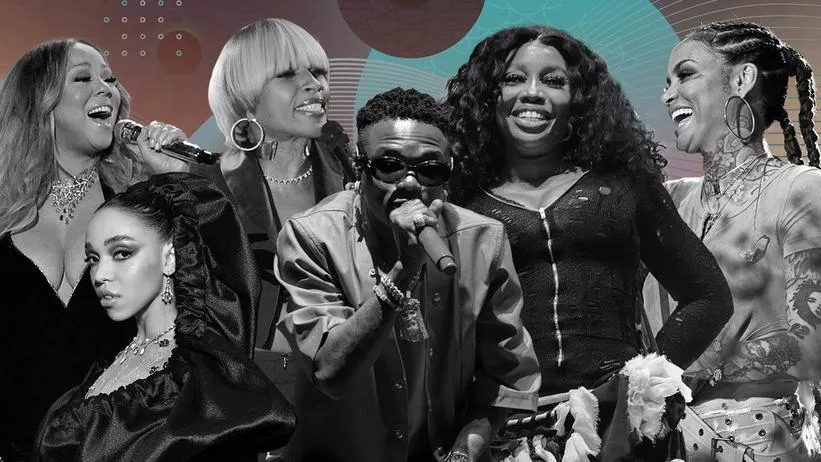Rhythm and Blues, commonly abbreviated as R&B, stands as one of the most influential and enduring genres in the history of music. This genre, characterized by its soulful melodies, heartfelt lyrics, and infectious rhythms, has captivated audiences for generations. In this comprehensive exploration of R&B, we will delve into its origins, evolution, key artists, and the profound impact it has had on the music industry and culture as a whole.
The Birth of R&B: A Harmonious Fusion (1920s-1940s)
The roots of R&B can be traced back to the early 20th century, where it emerged as a fusion of various musical styles. R&B first made its presence felt in the 1920s, as African American musicians started blending elements of jazz, gospel, and blues. This innovative blend of genres created a unique sound that spoke to the African American experience in the United States, giving rise to the earliest forms of R&B.
During this era, the term “race records” was commonly used to describe the music produced by African American artists. These records, while groundbreaking in their own right, laid the foundation for what would later become known as R&B. Pioneering artists like Louis Jordan and Sister Rosetta Tharpe began to shape the genre, using their musical prowess to push boundaries and experiment with new sounds.
The Golden Era of R&B (1950s-1960s)
The 1950s marked a transformative period for R&B. It was during this time that the genre truly came into its own, and the term “Rhythm and Blues” was coined to describe this evolving musical movement. R&B artists were now exploring themes of love, heartache, and the ups and downs of life, all while infusing their music with electrifying rhythms.
The emergence of artists like Ray Charles and Etta James epitomized the era. Their emotive vocal performances and fusion of gospel and blues elements set the stage for the genre’s future. The 1960s brought forth the Motown sound, with artists like Marvin Gaye and The Supremes dominating the charts and solidifying R&B as a prominent force in the music industry.
R&B Goes Mainstream (1970s-1980s)
The 1970s and 1980s saw R&B explode onto the mainstream stage. Artists like Stevie Wonder, Aretha Franklin, and Michael Jackson became global icons, and their contributions to the genre are nothing short of legendary. The infectious grooves, powerful vocals, and socially conscious lyrics of this era resonated with people from all walks of life.
R&B also evolved during this time, with the emergence of subgenres such as funk, disco, and neo-soul. These subgenres brought new dimensions to the music, showcasing the genre’s ability to adapt and innovate while maintaining its core essence. The infusion of funk rhythms and disco beats in songs like Michael Jackson’s “Billie Jean” and Prince’s “Kiss” demonstrated the genre’s versatility.
The Contemporary R&B Landscape (1990s-Present)
The 1990s ushered in a new era of R&B characterized by hip-hop influences, innovative production techniques, and a focus on contemporary issues. Artists like Whitney Houston, R. Kelly, and Mary J. Blige dominated the charts during this period, and their music spoke to the complex emotions and experiences of a rapidly changing world.
As we move into the 21st century, R&B continues to evolve. The genre has embraced digital technology, giving rise to subgenres like “trap soul” and “alternative R&B.” Artists like Beyoncé, Frank Ocean, and Rihanna have pushed the boundaries of what R&B can be, blurring the lines between genres and expanding its reach to new audiences.
The Influence of R&B Beyond Music
R&B has not only shaped the music industry but has also had a profound impact on culture as a whole. Its influence can be seen in fashion, dance, and even the way we communicate. The smooth and seductive rhythms of R&B have inspired countless couples on the dance floor, and its romantic lyrics have become the soundtrack to countless love stories.
The genre has also been a platform for social commentary. Artists like Nina Simone and Marvin Gaye used their music to address pressing issues, from civil rights to political unrest. R&B continues to serve as a powerful vehicle for artists to express their views on social justice, inequality, and love in all its forms.
Conclusion
In conclusion, R&B, or Rhythm and Blues, has traversed a remarkable journey through the annals of music history. From its humble beginnings as a fusion of jazz, gospel, and blues to its modern-day incarnations that blend hip-hop and electronic elements, R&B has consistently captured the essence of the human experience. The keyword “R&B” has resonated through every paragraph of this article, underscoring its importance and significance in the world of music.
As we look back on the evolution of R&B, we recognize the genre’s ability to adapt, innovate, and reflect the changing times. Its influence extends far beyond the realm of music, shaping culture and inspiring countless individuals around the world. With each new generation of artists and fans, R&B continues to thrive, reminding us all of the enduring power of rhythm and blues.

